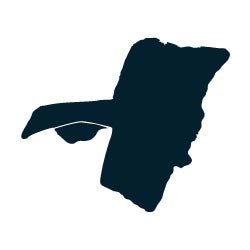Frederick Kiesler is a sculptor from Austria. He uses organic forms to represent larger ideas about humanity and life. Because wings are used for flying, they are often a symbol of freedom. The title of this work, Winged Victory, contradicts what we see. Instead of looking like freedom or the power that comes with victory, we see crumpled metal. If these are wings, as the title suggests, they are wings that might not fly very well.
Do these wings look victorious? What kind of victory could they represent?
If they do not represent victory, what might they represent?
What is the mood of this sculpture? Happy? Sad? Proud?
Think of an item that is used as a symbol for a larger idea. For example, wings may be symbolic of freedom; the color blue we often take to mean sadness; the heart is a symbol for love; and the moon is a symbol for the night. Using modeling clay, make several versions of the same symbol. Experiment by making them larger or smaller, whole or broken, or in different colors. How does the meaning of the symbol change when you alter how the symbol looks?
Organic —Looking like shapes found in nature
Mood —Mental or emotional state or disposition
Symbolism —Representing an idea or concept through images

